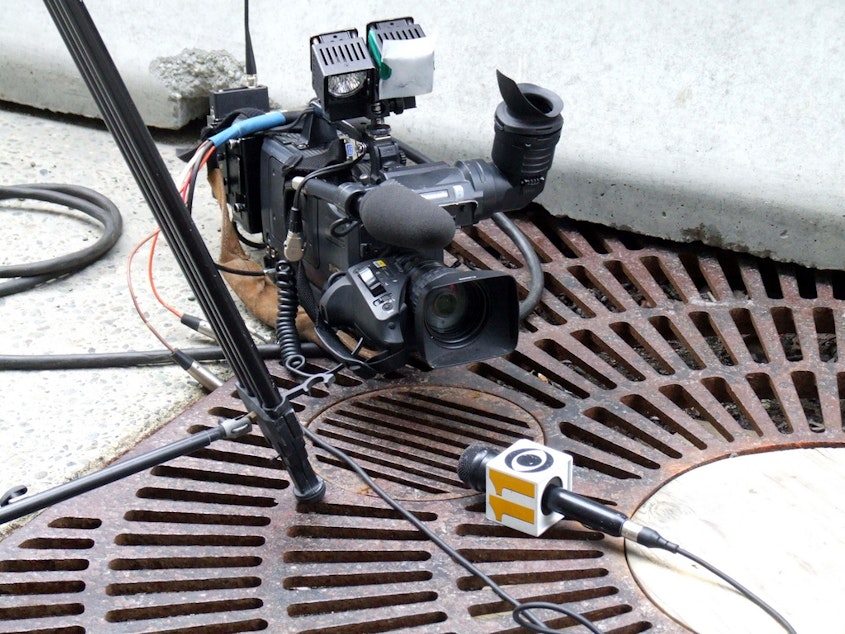How The Media Can Help Prevent Mass Shootings

Forensic psychologist Dr. Park Dietz worries the media has encouraged copycats of mass shootings. Recently, there have been two college shootings in as many weeks.
“The longer we continue the coverage, the more colorful, emotionally-arousing and biographical about the shooter that coverage is, the more imitators we’ll attract,” Dietz told KUOW’s Marcie Sillman on The Record. Sillman spoke with Dietz on Friday, the day after a shooting at Seattle Pacific University left one dead and three wounded.
The coverage could affect “a segment of the audience that is at risk of doing this,” Dietz said.
“And that segment of the audience is people that are depressed and suicidal, people who are angry and blaming others for their problems – perhaps because they are paranoid – and people who are armed or know how to get armed.”
Dietz, who is a founder of the Threat Assessment Group, said he has urged the media to reconsider their coverage style since 1993.
Sponsored
“I have been on CNN at least three times saying, ‘If you keep this up, we’re going to have another one within two weeks’ – and I’ve been right all three times,” he said.
Aaron Rey Ybarra was charged on Tuesday with first-degree murder in the SPU shooting, which occurred 13 days after Elliot Rodger killed six people and wounded 13 more before shooting himself near the University of California, Santa Barbara.
Ybarra reportedly idealized mass shootings and had visited the site of the 1999 Columbine High School shootings that resulted in 13 deaths.
Responsible media coverage of an event can be done to good effect for people without increasing the risks, Dietz said. He offered guidelines:
First, avoid pictures of the shooter looking cool, powerful or attractive. “We only want to see unattractive mug shots or photos of them dead on an autopsy table,” Dietz said.
Sponsored
Second, Dietz cautioned against radio or TV biographies about the shooter in the first year after the incident; for the print media, never have a picture of the shooter above the fold or on the cover.
“Stick to the ways that don’t create risk: Simple factual reporting without histrionics, without arousing the fear and the level of intensity among the public,” Dietz said. “That unnecessary fear mongering traumatizes the public and it inspires the imitators. On the other hand, sadness and grief are appropriate emotions, or admiration for the hero is appropriate.”
In the case of the SPU shooting, Dietz praised the outpouring of attention on Jon Meis, 22, a volunteer building monitor who subdued the shooter with pepper spray.
“I know that I am being hailed as a hero, and as many people have suggested I find this hard to accept,” Meis said in a statement released Monday. “However, what I find most difficult about this situation is the devastating reality that a hero cannot come without tragedy.”
Produced for the Web by Kara McDermott.

